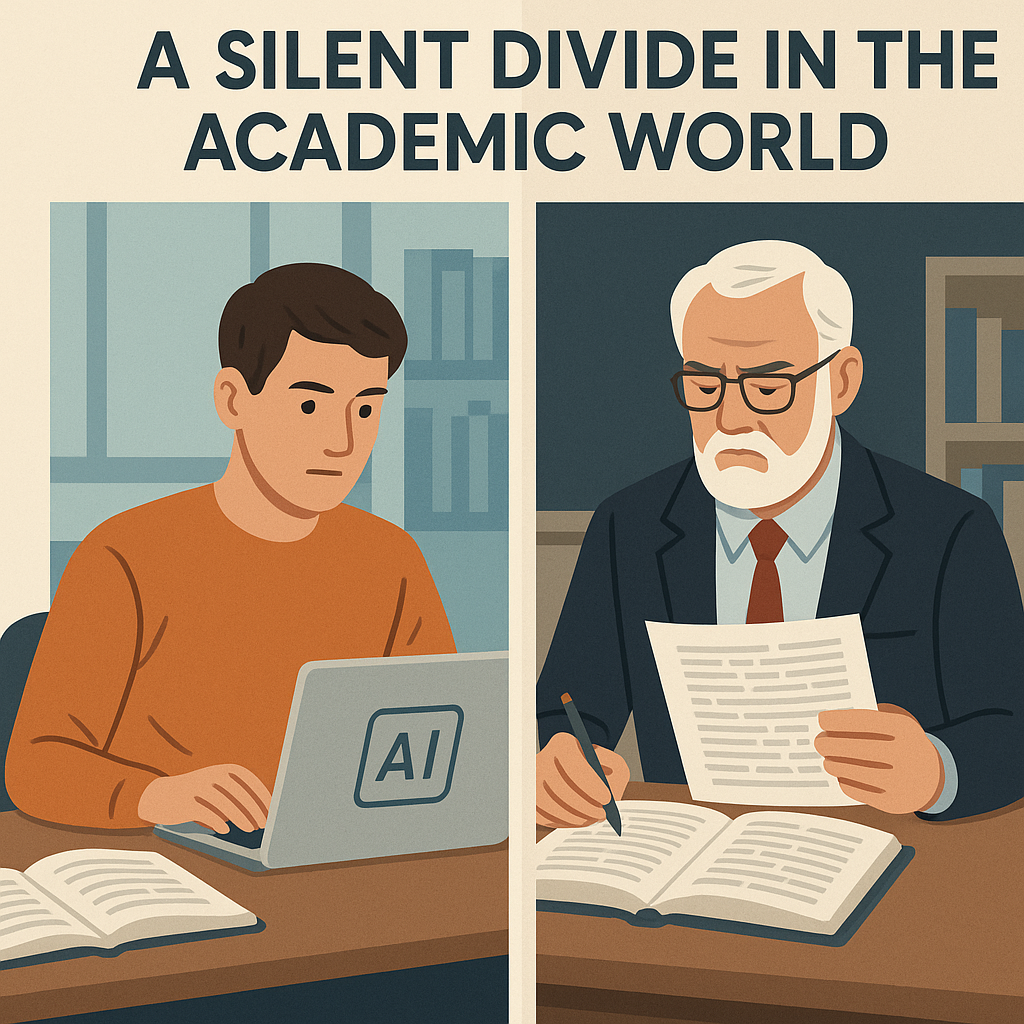A Silent Divide in the Academic World
In universities across the world, a quiet but growing divide is emerging—one that isn’t just about age or status, but about how knowledge is accessed, processed, and understood. On one side are students, embracing artificial intelligence to manage the crushing volume of academic reading and writing. On the other side are professors, many of whom remain skeptical or unaware of how deeply these tools have embedded themselves into the student experience.
Students today are overwhelmed by information. Academic programs demand that they consume and synthesize hundreds of papers, often across multiple disciplines, in very little time. To survive this, they’ve turned to the best AI academic tools available—technologies that can summarize scientific articles in seconds, identify arguments in dense texts, and even offer structural suggestions for research writing. Using apps to read research papers is no longer considered a hack—it’s a core part of how students approach their education. Tools that use AI for reading research papers or paper reading AI platforms are now as common as citation managers or Google Scholar tabs.
Professors Are Falling Behind
Faculty members, however, often still operate within traditional frameworks. Many still believe in full-text reading, note-taking by hand, and writing literature reviews from scratch. These values are rooted in rigor, deep engagement, and discipline. But they’re increasingly out of sync with how research is actually being done—especially by the people they're teaching. When professors discourage or outright ban AI tools without understanding them, they risk not only alienating students but also misunderstanding the nature of the work being submitted.
This gap in tool adoption reflects a deeper divide in expectations. Professors assume students are reading everything thoroughly. Students assume professors know they’re using AI to help with that process. When neither side says it out loud, the result is confusion, misjudgment, and a disconnect in how academic performance is measured. Professors may see polished literature reviews and assume a student spent days reading; in reality, that student may have used AI literature review tools and read paper AI software to scan dozens of papers in a single afternoon.
A New Research Reality
The truth is that AI is redefining what it means to do academic research. For students, it’s not just about reading less—it’s about understanding more in less time. With the best AI for academic research, they can extract key findings, evaluate methods, and synthesize arguments across multiple papers with a speed that manual work can’t match. This isn’t about laziness. It’s about adapting to scale. The number of academic papers published every year is exploding. No one—not even tenured professors—can keep up without assistance.
But when classrooms don’t acknowledge this new reality, students are forced into silence. They don’t talk about their tools, and professors don’t ask. That silence is breeding a kind of intellectual double life, where students complete assignments in one mode and faculty evaluate them in another. The longer this goes unaddressed, the harder it becomes to bridge that gap.
What Happens When We Don’t Catch Up?
This isn’t a question of whether AI belongs in academia—it’s already there. The better question is how we adapt. Will universities embrace these tools as legitimate extensions of research practice? Or will they continue to punish students for evolving faster than the systems built to evaluate them?
If institutions don’t make space for these conversations, the divide will only grow wider. Students will continue using AI paper review tools, apps to read research papers, and AI to summarize scientific articles. Professors will continue to assess their work through outdated assumptions. And a fundamental mismatch will persist in what academic work actually looks like, who’s producing it, and how it's being judged.
Bridging the Gap Before It’s Too Late
The use of AI for academic research is not a passing trend. It's a shift in how intellectual labor is distributed. The best AI academic tools aren’t replacing learning—they’re changing how it starts. It’s time to bring that change into the open, not hide it behind policy ambiguity or generational defensiveness.
If academia wants to stay relevant, honest, and fair, it must stop pretending AI isn’t in the room. The question isn’t whether students are using AI—it’s whether faculty and institutions are ready to meet them where they are.
